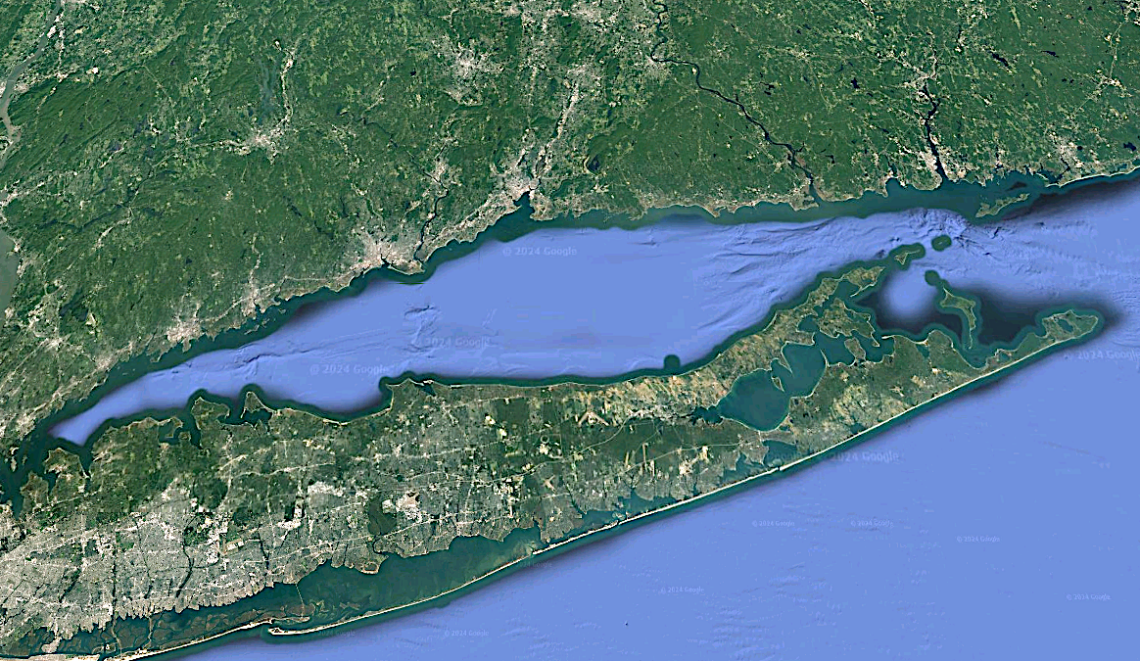Call: 1-800-832-7191
Tides in Long Island Sound

The Tides in Long Island Sound
Tides in Long Island Sound are challenging to say the least. The Sound connects to the Atlantic Ocean at both ends. The Race at the eastern end, connects to the Atlantic via Block Island Sound. Hell Gate at the western end, connects to the East River and New York Harbor. Tides in the Sound are semidiurnal. That means there are two high tides and two low tides each day. However, the timing and strength of these tides vary across the Sound due to its shape and the dual openings. The moons cycle and tilt of the earth’s axis plays a role as well.
What is Long Island Sound
Long Island Sound is a tidal estuary between Connecticut and Long Island. Freshwater and saltwater mix in a tidal estuary, a partially enclosed coastal body of water. Tides cause the water level and salinity to change regularly. This process creates brackish water, which contains more salt than freshwater but less than seawater. Currents can reverse direction depending on the tide. This is why estuaries are rich in nutrients and support diverse ecosystems. They serve as nurseries for many marine species.
Why do Estuaries matter? Estuaries support birds, fish, shellfish, and plant life. Many cities and ports are located on estuaries due to their access to both inland and oceanic routes. They help protect inland areas from storm surges and flooding.
What is The Race
The Race is a narrow, deep channel at the eastern end of Long Island Sound. Challanges being:
- Very strong tidal currents, often exceeding 4 knots
- Tidal flow direction changes with the tide. These changes funneling massive volumes of water in and out of the Sound
- Upwelling and turbulence, due to the depth and constriction, making it a hotspot for fishing and a challenge for navigation
- Because it’s the main outlet for tidal exchange, The Race acts like a throttle, accelerating water movement during tidal changes.
What is Hell Gate
Hell Gate is a narrow tidal strait in the East River, connecting the western end of Long Island Sound to the Harlem and East Rivers.
- Complex and dangerous currents, due to the convergence of multiple water bodies
- Tidal lag, where the timing of high and low tides differs from the rest of the Sound
- Standing waves and eddies, especially during peak tidal flow
- Hell Gate’s name reflects its historical reputation for shipwrecks and treacherous navigation, largely due to these tidal dynamics.
Summary
The tides in Long Island Sound demand some know-how. One should not be “exploring” The Race and Hell Gate without experience. The Race is a narrow, deep channel at eastern end with fast currents, strong tidal exchange. This presents a huge navigational challenge. Hell Gate is the confluence of rivers at western end creating complex currents, tidal lag, eddies (a swirling current of water that moves in a circular pattern, often opposite to the direction of the main current) and also presents a huge navigational challenge. Treat these areas with respect. We all love to be on the water, but the water can be unforgiving. Be careful friends.
Visit the Connecticut Department of Energy and Environmental Protection’s Tide Table page for tides in Long Island Sound. Like this Blog…view the rest of them on our Boaters Blog Page
